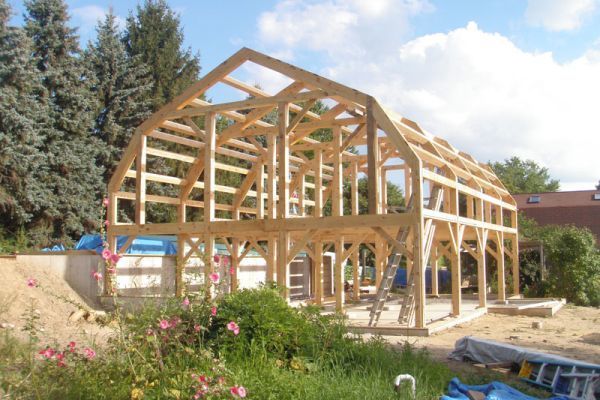Slant Roof 14 x 12 Outbuilding Assembling Diagrams : Tasks To Think of While Making A Garden Shed

A lintel is a small beam that runs horizontally across the top of door or window. Install battens between the top trim piece and the drip edge flashing at base of wall. The cost of a custom garden outbuilding could be higher than for a pre-manufactured shed, depending on materials used and who does construction. Use sheets of treated plywood for wood floors and plywood siding for the walls. A pump sprayer is definitely the quickest way to finish job and could give you better accuracy. The roof is designed to keep rain away from door. The header (https://www.shedplansz.com/large-shed-plans) transfers the weight of structure above window and carries it through king stud-trimmer stud combination to the floor.
Know and comply with your local building codes regarding roof construction in your area. Stagger your floor sheeting when building your patio shed floor. A sprayer is best for painting older sheds as the older wood may catch and grab bristles and roller material more. Install temporary bracing to keep the support posts level and in place. Trim excess at top and bottom with the circular saw, and check for square again. Composite shingles are more durable than asphalt shingles and are resistant to mold and algae damage. Cut 2x8 lumber lumber strips to make an outer frame and jostle them into place to create an outer frame.
You can also paint the shed if you want, but varnishing wood will be preferable. Drill birdsmouth cuts in the 2x4 boards. Be mindful of where other screws are already and use a level if needed. The block provides attachment (click reference) for the triangular piece that fills in end of return. Install two fasteners per board in the horizontal battens. If you don’t like opening under the shed, construct a skirt to cover the space between the garden shed floor and the ground. Fasten rafter plate to the wall studs with lag screws. A snapped line across ends of lookouts ensures that barge rafter will be perfectly straight.
Processing video...
After putting in the studs for the dropped gable, cut and install second plate. Cut pine to length, glue the groove and push together, and then attach to the back braces with 1.5 inch screws. Five foot ramps seemed to be the most common length for a garden outbuilding ramp. While this provides a durable construction, the walls and roof are very thin and may warp out of shape over time. Window mesh grills are fitted using special bolts which can’t be loosened from outside. After positioning and attaching your last truss, now you are ready to start sheeting your trusses.
If you buy a ready-made shed, you may not have much choice in the size of the storage outbuilding and quality of lumber used. Fasten these between upright members. The air space also provides a pressure and capillary break within wall, interrupting water movement through the wall. Rain screen spacer mats provide another method of creating a vented airspace. Nail the barge rafter at all points and cut the bottom end flush with the outside face of the subfascia. Hurricane ties are nailed on to bottom of rafter or truss and to the top wall plates. If the utility outbuilding floor has three-quarter inch flooring then allow treated plywood of ramp to line up nearly perfectly with top of shed flooring.
Once they are craft in half, you will need to pre-drill the threads for screws. Normal stud framing requires horizontal stringers to serve as attachment points. Smooth craft surface with a belt sander. You’ll only have a couple of inches to bore through to complete holes. Evaluate your home and property to determine best style for your needs. Dry fit the pieces into place and fasten the four corners of each individual piece down. A fascia board is installed on the rafter tails. Place pieces down beside each other and identify the locations you will be placing joist. Start by clearing the area of any weeds and grass before pouring the concrete floor and foundation.
Redundant barrier construction relies on a sealed siding material with tar paper directly under siding. Anchor the bracing in place with two 8d nails at each stud and craft ends of bracing off flush with plate edges.